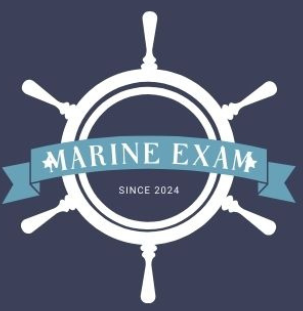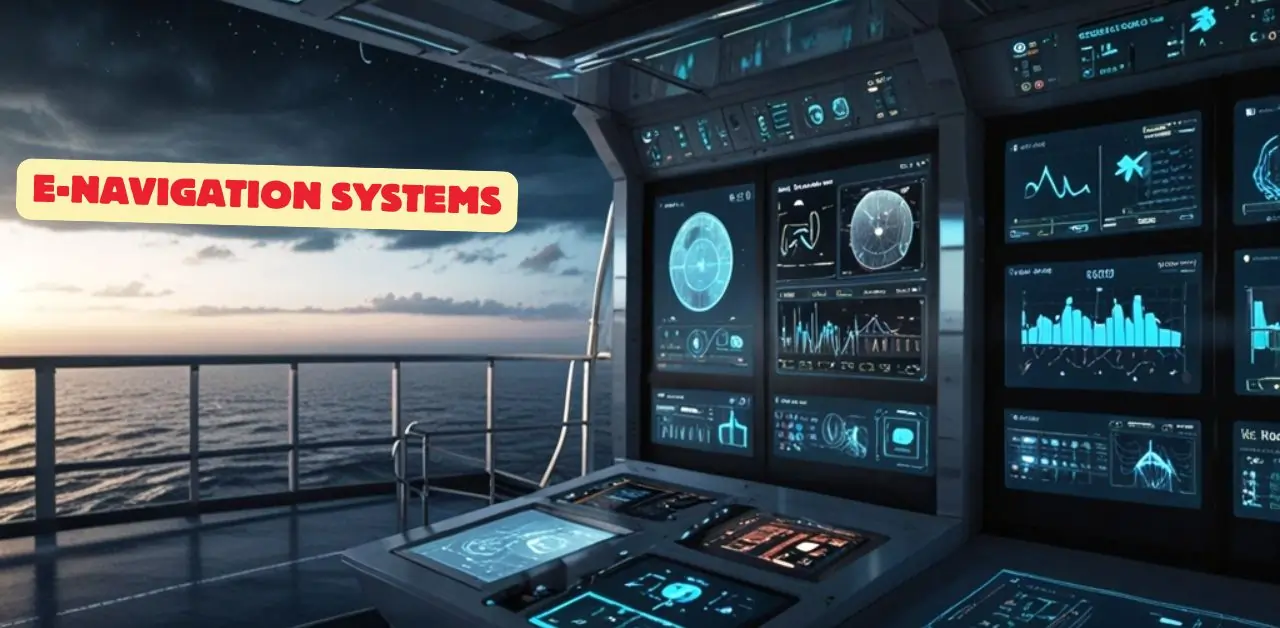E-navigation systems have emerged as a cornerstone of modern maritime operations, integrating advanced technologies to enhance navigation, safety, and operational efficiency. By leveraging digital tools, real-time data, and automated processes, e-navigation is transforming the way ships are managed and operated, addressing the growing complexities of global shipping.
In an industry where precision and reliability are paramount, e-navigation systems provide a robust framework for optimizing routes, reducing human error, and ensuring compliance with international regulations. These systems are not only improving the safety of vessels and crew but also driving significant cost savings and environmental benefits through smarter resource management.
This blog delves into the top five trends shaping the future of e-navigation, offering insights into how these advancements are redefining the maritime industry. From artificial intelligence to sustainable navigation practices, we explore the cutting-edge developments that qualified engineers and maritime professionals need to understand to stay ahead in this rapidly evolving field.
E-Navigation Systems
Trend 1: Integration of Artificial Intelligence (AI) and Machine Learning (ML)
Artificial Intelligence (AI) and Machine Learning (ML) are at the forefront of the e-navigation revolution, offering transformative solutions for route optimization, fuel efficiency, and predictive maintenance. By analyzing vast amounts of data from sensors, weather systems, and historical patterns, AI-powered tools enable ships to navigate more efficiently and safely.
Optimizing Route Planning and Fuel Efficiency
AI algorithms process real-time data to identify the most efficient routes, considering factors such as weather conditions, sea currents, and traffic congestion. This not only reduces fuel consumption but also minimizes voyage time, leading to significant cost savings. For instance, AI-driven systems like **Weather Routing Software** provide dynamic route adjustments to avoid adverse conditions, ensuring smoother and safer journeys.
Predictive Maintenance for Enhanced Reliability
Machine Learning models analyze equipment performance data to predict potential failures before they occur. This proactive approach allows for timely maintenance, reducing downtime and preventing costly repairs. Tools like **Condition Monitoring Systems** use ML to assess the health of critical components, such as engines and propulsion systems, ensuring optimal performance throughout the voyage.
Real-World Applications
The integration of AI and ML is paving the way for **autonomous ships**, where advanced decision-making systems can operate vessels with minimal human intervention. Companies like **Rolls-Royce** and **Kongsberg** are developing autonomous shipping technologies that rely on AI for navigation, collision avoidance, and operational efficiency. Additionally, **smart decision-making systems** are being deployed on crewed vessels to assist officers in complex scenarios, enhancing situational awareness and reducing the risk of human error.
Trend 2: Enhanced Connectivity with Satellite and IoT
The integration of satellite communication and the Internet of Things (IoT) is revolutionizing e-navigation by enabling seamless data exchange and real-time monitoring across maritime operations. These technologies are critical for enhancing fleet management, operational efficiency, and decision-making in the marine industry.
Role of Satellite Communication in E-Navigation
Satellite communication provides uninterrupted connectivity, even in remote oceanic regions, ensuring that vessels remain in constant contact with onshore operations and other ships. This connectivity supports critical functions such as weather updates, collision avoidance, and emergency response. Advanced satellite systems, like VSAT (Very Small Aperture Terminal), offer high-speed data transmission, enabling real-time tracking and communication.
IoT-Driven Real-Time Data Sharing
IoT devices onboard ships, such as sensors and monitoring systems, collect and transmit data on engine performance, fuel consumption, and environmental conditions. This real-time data sharing allows fleet managers to optimize operations, reduce costs, and improve safety. For example, IoT-enabled Predictive Maintenance Systems analyze equipment health and alert crews to potential issues before they escalate.
Leveraging 5G Networks and Cloud-Based Platforms
The deployment of 5G networks is enhancing connectivity by providing faster and more reliable communication between ships and shore-based systems. Combined with cloud-based platforms, 5G enables the storage and analysis of vast amounts of data, facilitating better decision-making and operational transparency. Cloud platforms like Microsoft Azure Maritime and AWS IoT Core are being used to manage fleets, monitor cargo, and streamline logistics.
Trend 3: Digital Twins for Ship Navigation
Digital twins are emerging as a transformative technology in the maritime industry, offering a virtual replica of physical ships and their systems. These digital models enable real-time simulation, monitoring, and analysis, providing valuable insights for optimizing navigation and operational performance.
Definition and Application of Digital Twins
A digital twin is a dynamic, digital representation of a physical asset, such as a ship, that mirrors its behavior and performance in real time. In the maritime sector, digital twins are used to replicate ship systems, including propulsion, navigation, and cargo handling. This technology allows engineers and operators to visualize and analyze ship operations without physical intervention, enhancing decision-making and operational efficiency.
Simulating Ship Operations for Risk Management
Digital twins simulate various operational scenarios, enabling crews to anticipate potential risks and optimize performance. For instance, they can model the impact of adverse weather conditions, engine malfunctions, or route changes, allowing for proactive adjustments. This capability significantly improves risk management by identifying vulnerabilities and testing solutions in a virtual environment before implementation.
Real-World Applications and Case Studies
Leading companies in the maritime industry are leveraging digital twins to enhance navigation and performance. For example, Wärtsilä has developed digital twin solutions for ship propulsion systems, enabling real-time monitoring and predictive maintenance. Similarly, Kongsberg Digital offers a Vessel Insight platform that uses digital twins to optimize fleet operations and reduce fuel consumption. These applications demonstrate how digital twins are driving innovation and efficiency in ship navigation.
Trend 4: Cybersecurity in E-Navigation Systems
As e-navigation systems become increasingly interconnected, the importance of cybersecurity in safeguarding these systems from cyber threats cannot be overstated. Protecting maritime navigation systems from hacking, data breaches, and system failures is critical to ensuring the safety and reliability of ship operations.
Growing Importance of Cybersecurity in Maritime Operations
E-navigation systems rely on digital technologies, satellite communications, and IoT devices, making them vulnerable to cyberattacks. A breach in these systems can lead to unauthorized access, manipulation of navigation data, or even complete system failure, posing significant risks to vessel safety and operational continuity. The maritime industry must prioritize cybersecurity to mitigate these threats and maintain trust in digital navigation solutions.
Risks of Hacking, Data Breaches, and System Failures
Cyber threats such as ransomware, phishing, and malware can compromise e-navigation systems, leading to data theft, operational disruptions, or collisions. For example, a hacker gaining access to a ship’s Electronic Chart Display and Information System (ECDIS) could alter course data, endangering the vessel and its crew. Additionally, data breaches can expose sensitive information, including cargo details and crew records, to malicious actors.
Best Practices and Technologies for Securing E-Navigation Systems
To address these risks, the maritime industry is adopting advanced cybersecurity measures. These include:
- Encryption of Data Transmissions: Ensuring that all communication between ships and shore-based systems is encrypted to prevent interception.
- Regular Software Updates: Keeping navigation systems updated with the latest security patches to address vulnerabilities.
- Network Segmentation: Isolating critical systems from less secure networks to limit the spread of potential attacks.
- Intrusion Detection Systems (IDS): Deploying IDS to monitor network traffic and detect suspicious activity in real time.
- Crew Training: Educating maritime personnel on cybersecurity best practices to prevent human error-related breaches.
Companies like DNV GL and Maritime Cybersecurity are developing specialized solutions to protect e-navigation systems, ensuring compliance with international standards such as the IMO’s Guidelines on Maritime Cyber Risk Management.
Trend 5: Green Navigation for Sustainable Shipping
E-navigation systems are playing a pivotal role in advancing green shipping initiatives by optimizing vessel operations to reduce fuel consumption and emissions. These systems integrate advanced technologies to support sustainable maritime practices, ensuring compliance with stringent environmental regulations while enhancing operational efficiency.
Optimizing Routes for Fuel Efficiency and Emission Reduction
E-navigation systems utilize real-time data, including weather conditions, sea currents, and traffic patterns, to calculate the most fuel-efficient routes. By minimizing unnecessary fuel consumption, these systems significantly reduce greenhouse gas emissions. For instance, Dynamic Route Optimization Tools adjust voyage plans in real time to avoid adverse conditions, ensuring optimal performance and environmental compliance.
Integration of Environmental Monitoring Tools
To meet IMO regulations, such as the Energy Efficiency Design Index (EEDI) and Ship Energy Efficiency Management Plan (SEEMP), e-navigation systems incorporate environmental monitoring tools. These tools track emissions, fuel usage, and energy efficiency, providing actionable insights for reducing a vessel’s environmental footprint. Technologies like Exhaust Gas Cleaning Systems (EGCS) and Continuous Emissions Monitoring Systems (CEMS) are integrated with e-navigation platforms to ensure compliance and promote sustainability.
Examples of E-Navigation Systems Supporting Sustainable Practices
Several e-navigation solutions are contributing to sustainable maritime operations:
- Wärtsilä’s Navi-Planner: Optimizes voyage planning to reduce fuel consumption and emissions.
- Kongsberg’s EcoAdvisor: Provides real-time recommendations to improve energy efficiency and reduce environmental impact.
- ABB’s OCTOPUS: Uses AI and machine learning to optimize vessel performance and minimize emissions.
These systems demonstrate how e-navigation is driving the maritime industry toward a greener future, aligning with global sustainability goals.
FAQs
Q- What is e-navigation?
A. E-navigation integrates digital technologies like AI and IoT to enhance maritime navigation, optimizing routes and improving decision-making.
Q- How does e-navigation improve maritime safety?
A- It provides real-time data for collision avoidance, predictive maintenance, and emergency response, reducing human error and ensuring compliance.
Q- What are the challenges of implementing e-navigation systems?
A- Challenges include high costs, cybersecurity risks, crew training, and integrating new technologies with existing systems.
Q- How can companies start adopting e-navigation technologies?
A- Start by assessing operational needs, partnering with tech providers, and gradually integrating tools like AI route optimization or IoT monitoring.
Conclusion
The maritime industry is being transformed by e-navigation systems, with five key trends leading the way: AI and ML integration, enhanced satellite and IoT connectivity, digital twins, cybersecurity, and green navigation. These advancements are enhancing safety, efficiency, and sustainability across ship operations. AI optimizes routes and predictive maintenance, while IoT and satellite connectivity enable real-time data sharing. Digital twins simulate operations for better decision-making, and robust cybersecurity measures protect against cyber threats. Green navigation supports sustainable shipping by reducing emissions and fuel consumption.
Adopting these technologies ensures compliance with regulations and improves operational performance. For maritime professionals, staying updated on these trends is crucial to maintaining a competitive edge. Explore how e-navigation can benefit your operations and drive innovation in the maritime sector. The future of shipping lies in embracing these advancements for a safer, more efficient, and sustainable industry.

